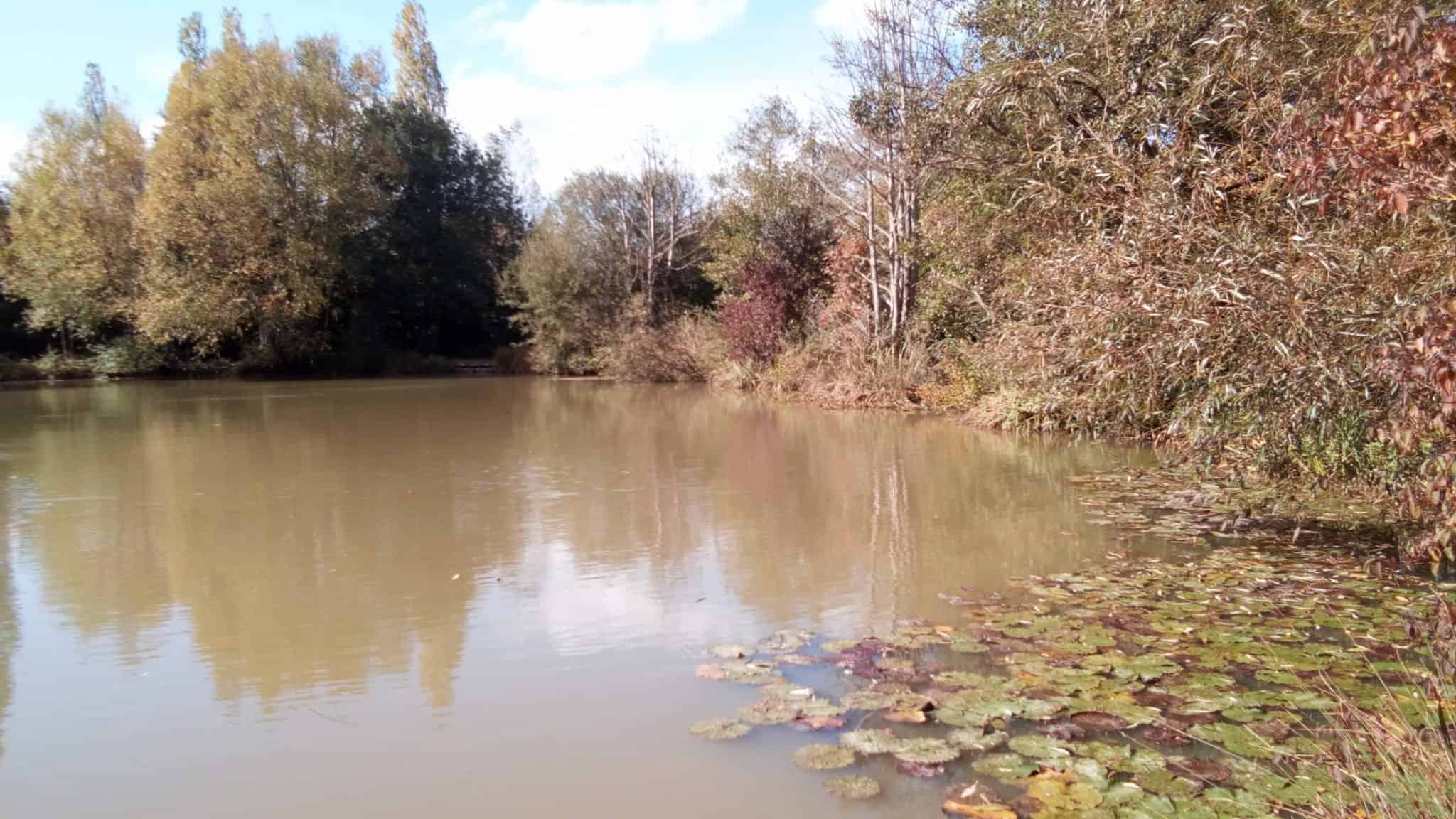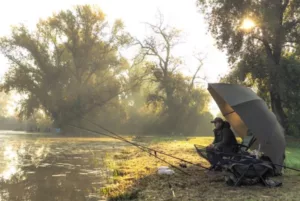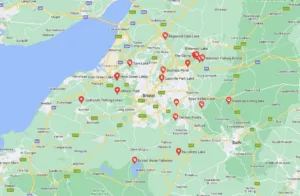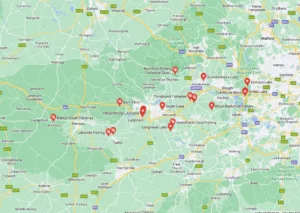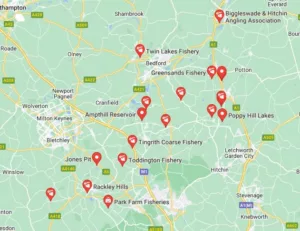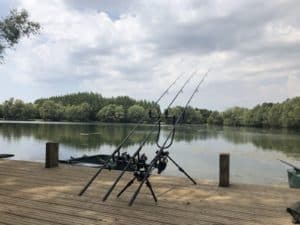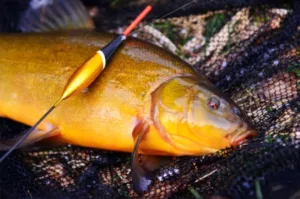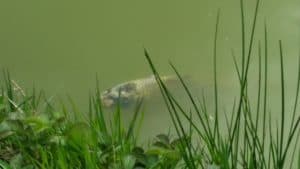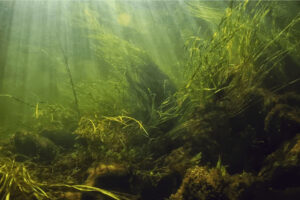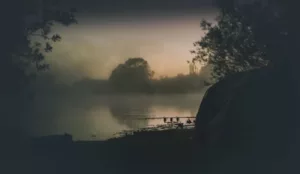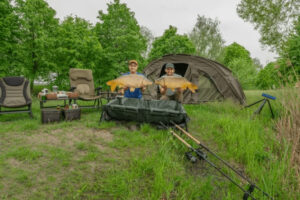Winter Carp Fishing Tips
Despite the cold weather, it’s still possible to catch a few fish in winter. In this guide, I’ll talk about some of the best ways to catch when you are winter carp fishing.
How to Catch Winter Carp – The Number 1 Tip? Recast regularly
One of the most important factors that you should consider when it comes to winter fishing is the use of recasting.
In areas where there are large numbers of fish, there’s a marked trend for takings to come quickly after casting out.
The reason why this is often the case is that cold weather often leads to the formation of large groups of fish in a particular location.
This can be in the deepest part of the lake or close to an island. Casting out regularly helps locate their winter holding areas.
Casting out regularly and moving at least one bait around can also help locate winter-holding areas.
If nothing happens with the casting out, you can always try casting out again in a couple of hours.
Some of the ideal locations for winter carp fishing include deep pools, weed beds, and areas that will get hot fast, such as reed beds and gully margins.
Cast Often and Follow the Fish Movements
One of the best ways to catch a few fish in winter is by keeping the rods moving in and out of the water. During winter, the fish don’t move as much.
This will allow you to keep an eye on the water and move your bait around to find them.
For me, I prefer to cast in every couple of hours while moving slowly around the swim in order to find bites.
A zig rig can also work well during winter as it can help attract odd fish sitting up in the water column.
Smaller Hook Baits for Winter Carp Fishing
Although smaller hooks and smaller baits work well during winter, being flexible with your rigs can also help you catch more fish.
These small boilies work well using just a couple of free baits and a couple of small boilie crumbs in a PVA bag. I’d add a couple of glugs to improve the attraction.
One of the most important factors that you should consider when it comes to winter carp fishing is the size of the bait you use. In winter, smaller boilies or 12mm or 10mm are ideal for smaller fish.
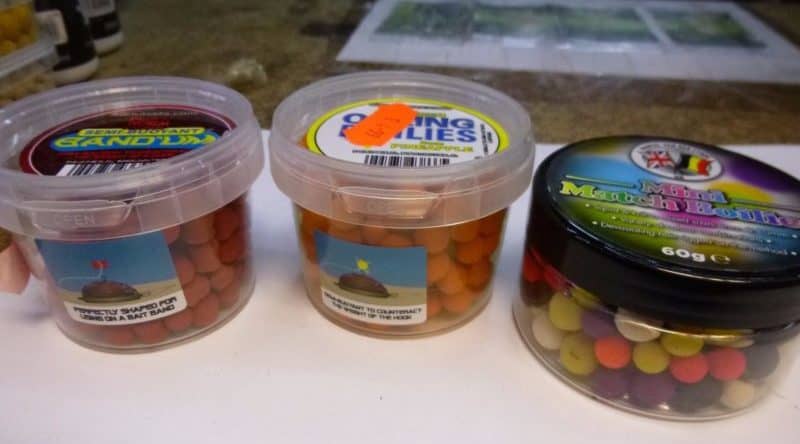
Use Lots of Liquid Attractants – Rehydrate Hook Baits With Liquids
One of the most important factors that you should consider when it comes to winter carp fishing is the consistency of the bait that you use.
In winter, you can’t just mix a lot of spod mix in to attract the fish. This is why it’s important that you add additional attractants such as boilie glug to your bait.
During winter, you should avoid using oils as they won’t absorb into the water. Adding more scent to the water can also help produce more fish.
Start in an Area Where You Can See Lots of Water, and Watch Out for Showing Fish
Although it’s tempting to watch the latest Netflix series while fishing, watching the water can help improve your chances of catching a few fish in the winter months.
One of the most effective ways to catch a few fish in winter is by moving to the area where you saw the fish.
Usually, I fish in areas that give me a good view of the lake. During the winter, the fish will start to move around and show more signs of activity.
Before you start fishing, make sure that you have a good view of the lake and place your chair at the front of your swim.
Once the fish start to show you where you need to go, you can start moving toward them.
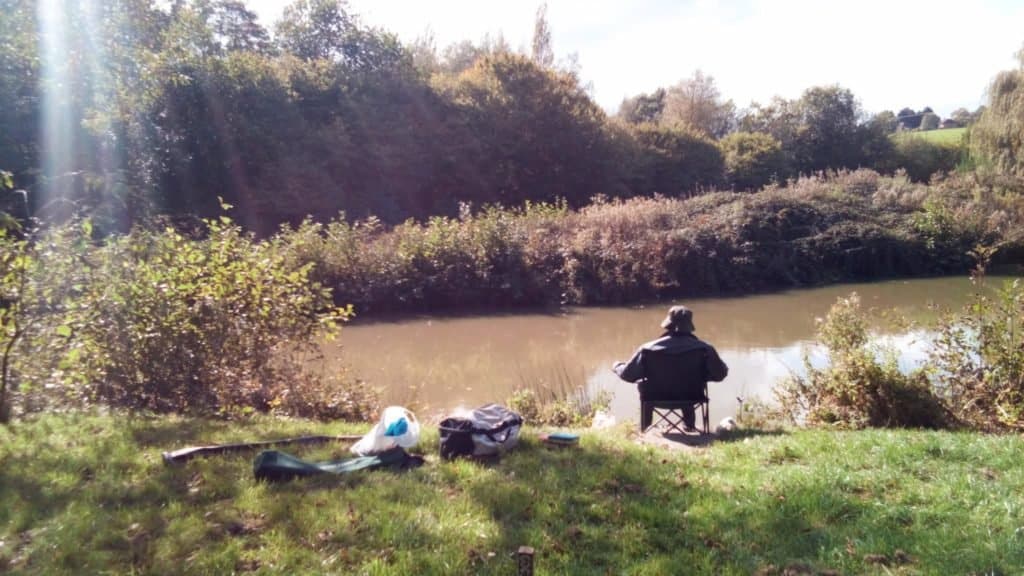
Prepare For The Cold Weather
Whether you are planning on fishing in commercial water or a lake that is in the middle of nowhere, make sure that you have all the necessary equipment ready to go.
In addition to fishing rods and tackle, you should also have warm clothes and a sleeping bag.
Having all of these items will allow you to keep warm and avoid getting cold.
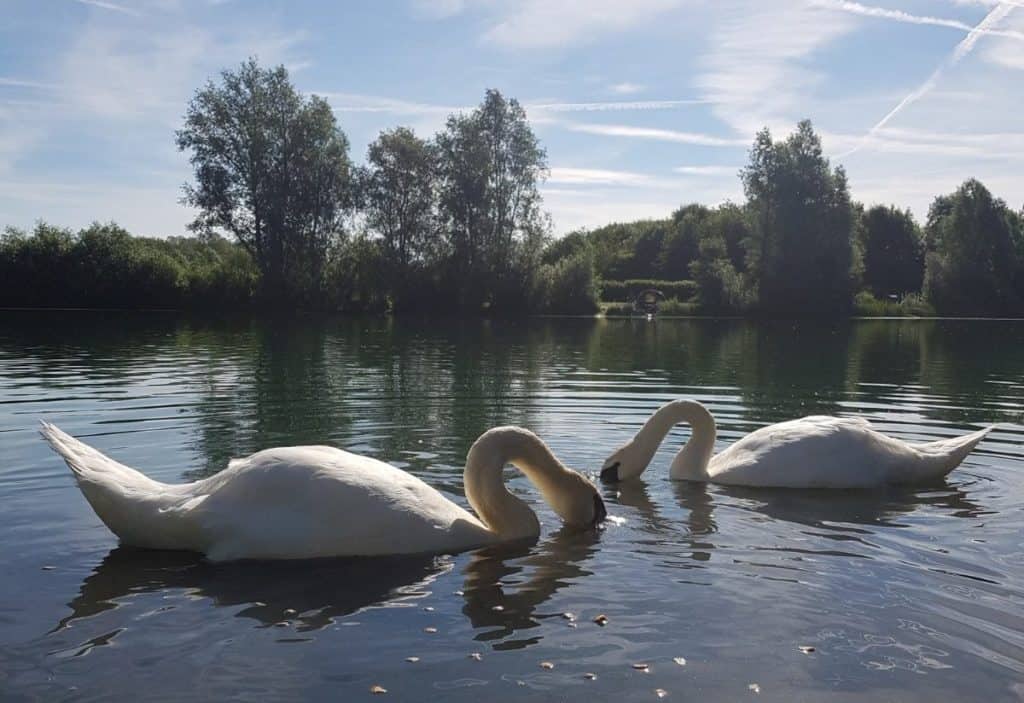
Winter Carp Bait Tactics
In addition to these, I also share some of my favorite winter carp fishing tactics. These are the techniques that I have used in difficult sessions.
Although I find winter carp fishing to be challenging, it’s important to keep going and not get downhearted.
PVA Stringers With Glug
One of the most important factors that I consider when it comes to winter carp fishing is keeping it simple.
Using 15mm boilies on a PVA string works perfectly. I only string around two or three extra boilies and then add a good glug of flavouring.
This method helps enhance the flavour of the bait and attract more fish.
Ground Bait, Bread Crumb and Liquids
Getting the smell of the attractants into the water is a bit challenging during winter as you don’t want to put a lot of bait in the water.
One of the best ways to get the smell of the bait into the water is by mixing bread crumb ground bait with liquid additives.
This mixture will help attract the fish to the area where you are fishing.
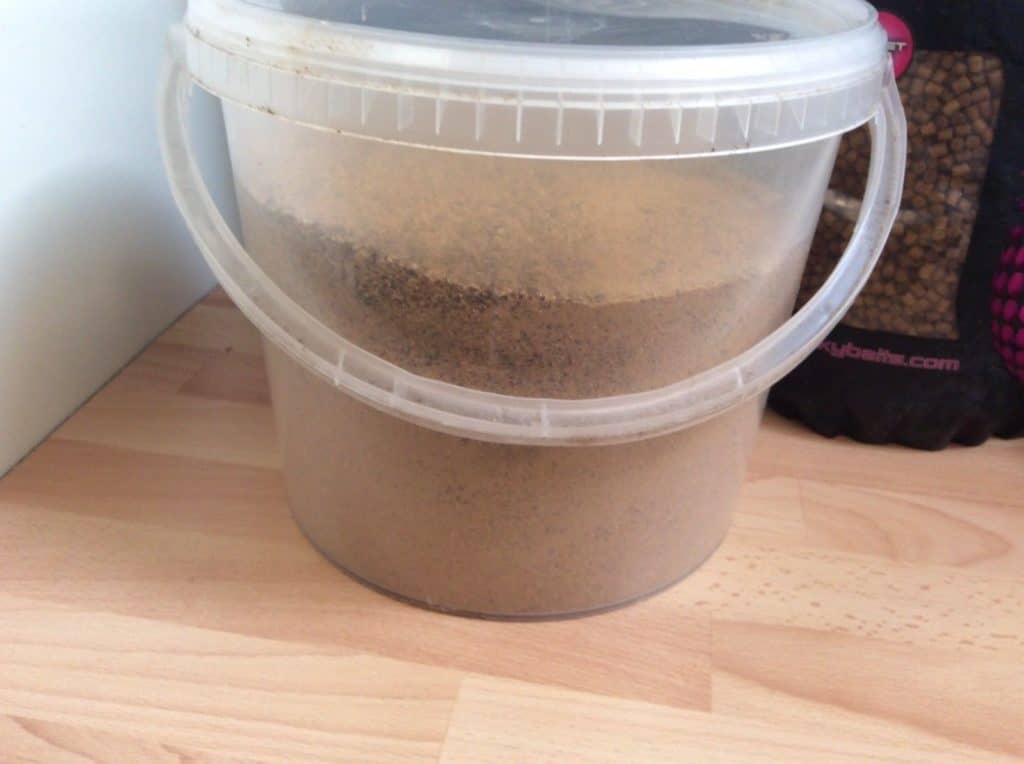
Best Winter Rigs for Carp Fishing
Chod and Helicopter Rigs
Chod and Helicopter rigs keep your hooks from being concealed in the chod and dead leaves. The hinging of the bait’s hair helps keep it away from the lead core and makes its presentation more enticing.
This rig is one that you should check out to see how it will work for you. I usually use a slightly longer hook link to make it more prominent in the water depending on the type of fishing I’m doing.
Single Hook Bait and the Introduction of Maggots
If you are looking for a different type of bait to use this winter, try using a hook size of 8 or 10, with a single pop-up hook bait and 10 to 20 maggots tied to the hook bait.
This method will allow you to target passing fish and instantly grab their attention. All fish love maggots.
One of the most overlooked tactics during winter carp fishing is using a maggot ring on a size 12 hook.
Depending on the type of fishing I do, I will typically fish a group of these on a size 12 hook.
After pouring boiling water over the dead maggots, or freezing them overnight.
PVA Bags Are Better for Winter Carp Fishing
Whilst winter carp fishing, I prefer to use a small amount of bait that is just enough to tempt the fish to take it. This is why I have been using a variety of bait sprays this season.
These are designed to make the hook bait stand out and attract more fish.
For this method, I usually use a 12mm or 10mm popup. I usually fish this with a small PVA bag containing low-oil pellets and some glug.
If the bites are quiet, this method will allow me to try and catch some fish. You can also mix this up with some crumbed or stick-based mixed boilies and use it for the bait.
I will be testing this method out over the winter and will let you know how it goes. It is also very easy to use as it is PVA-friendly.
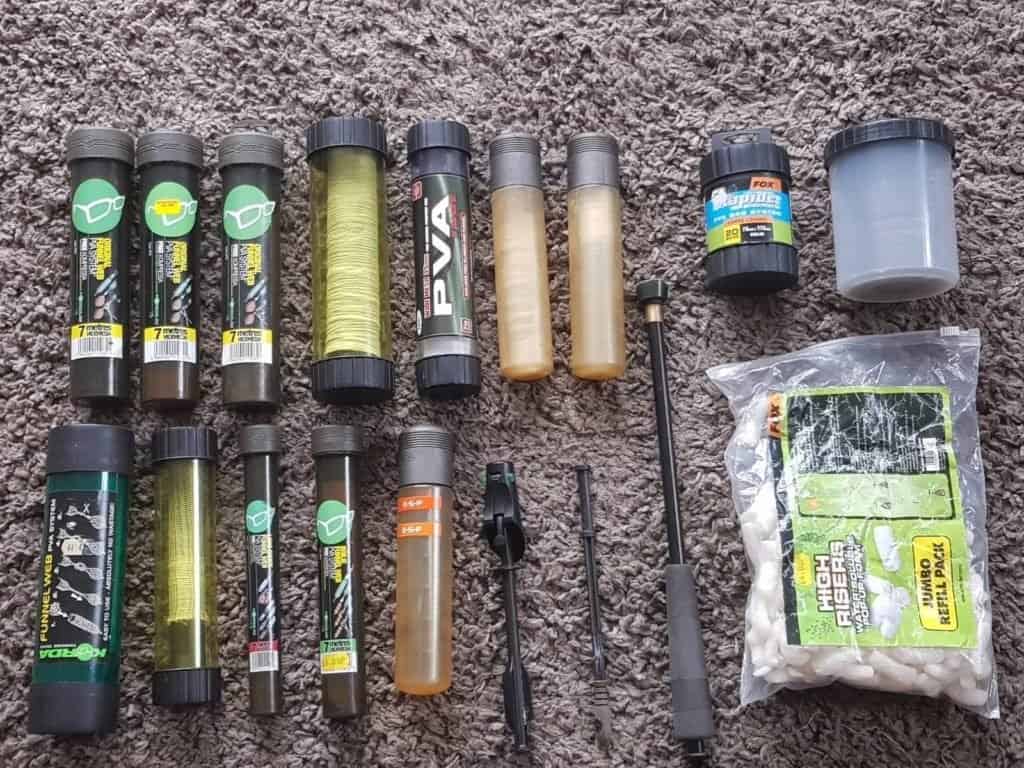
Why I Love Winter Carp Fishing
I believe that winter is my favorite time of year to fish for carp. The lakes and rivers are quiet during winter, which makes it easier for me to spend time fishing with myself rather than with other people.
Here are some of my tips to help you get started this season.
Venue Choice is the Key to Success
One of the most important factors that you should consider when it comes to choosing a good fishing location is finding a well-stocked lake that is not too deep.
This will allow you to target areas that are ideal for winter carp fishing. I have found that the deeper lakes tend to fish poorly during cold weather, while a shallow lake will allow the fish to feed quickly.
Save in the Summer, and Pay For Comfort During the Winter Months
Today, it is very important to avoid being wet or cold on the bank. If you are not able to fish effectively due to either of these factors, then you will most likely pack up and leave the area.
One of the best ways to avoid getting cold is to get some decent layers.
A good quality bivvy is also important to ensure that you are comfortable during winter carp fishing. Having a second skin and a groundsheet will allow you to keep yourself warm even if the temperatures get cold.
Before you start fishing, it is important that you have some winter sleeping bags and thermal bed covers.
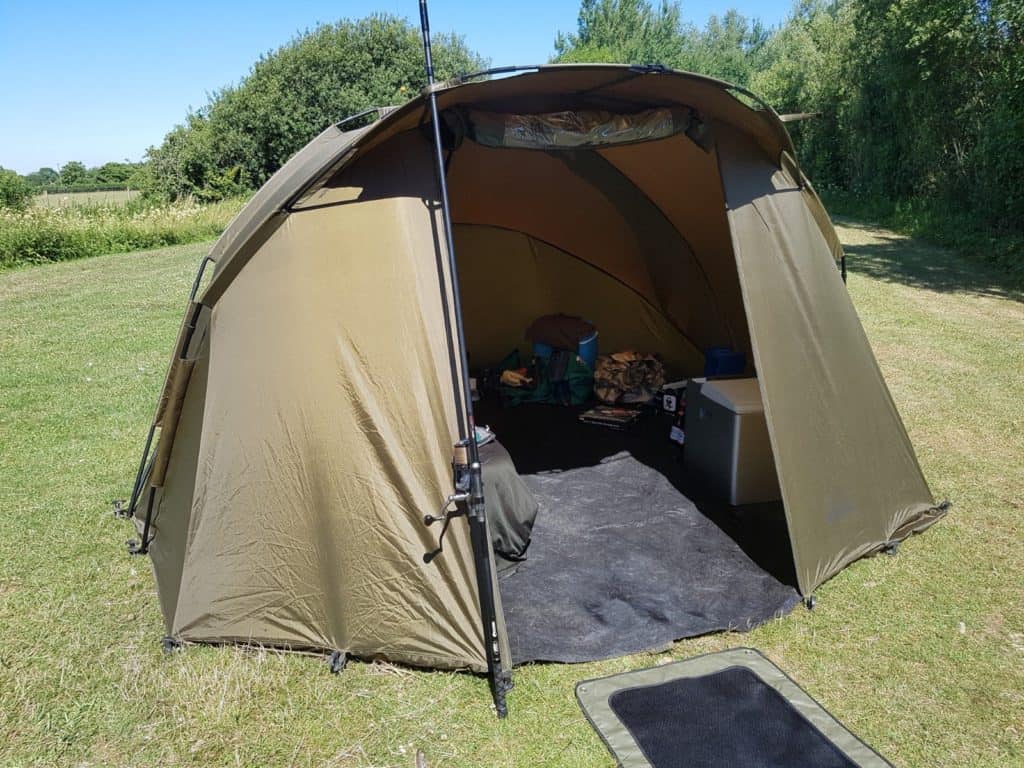
Get a Stove So You Can Keep Warm
Over the winter, I have seen a lot of people fishing on the banks who have been surviving on sandwiches and drinks purchased from the shops.
Having a stove and a couple of small pans can help you prepare a variety of hot food.
Having a carryall is also important to ensure that you have all of the necessary food and drinks to keep yourself warm and focused during winter carp fishing.
Even if the fish aren’t biting, a cup of tea or a sandwich can help keep you focused and warm.
Best Bait for Winter Carp Fishing
After November, I put away the traditional boilies and start using the maggots and worms.
I have found that these are the most effective winter bait that I can use.
I usually use a stocking mesh bag that has a mag aligner rig or a pop-up rig depending on the type of fishing that I am doing.
One of the most effective winter carp fishing techniques that I use is single hookbait fishing with a pop-up. This method is usually deadly when the fish are not in a feeding mood.
This type of fishing can be very effective if the weather is good and the fish are eating. After all, if the weather is good, then you can give the fish some food.
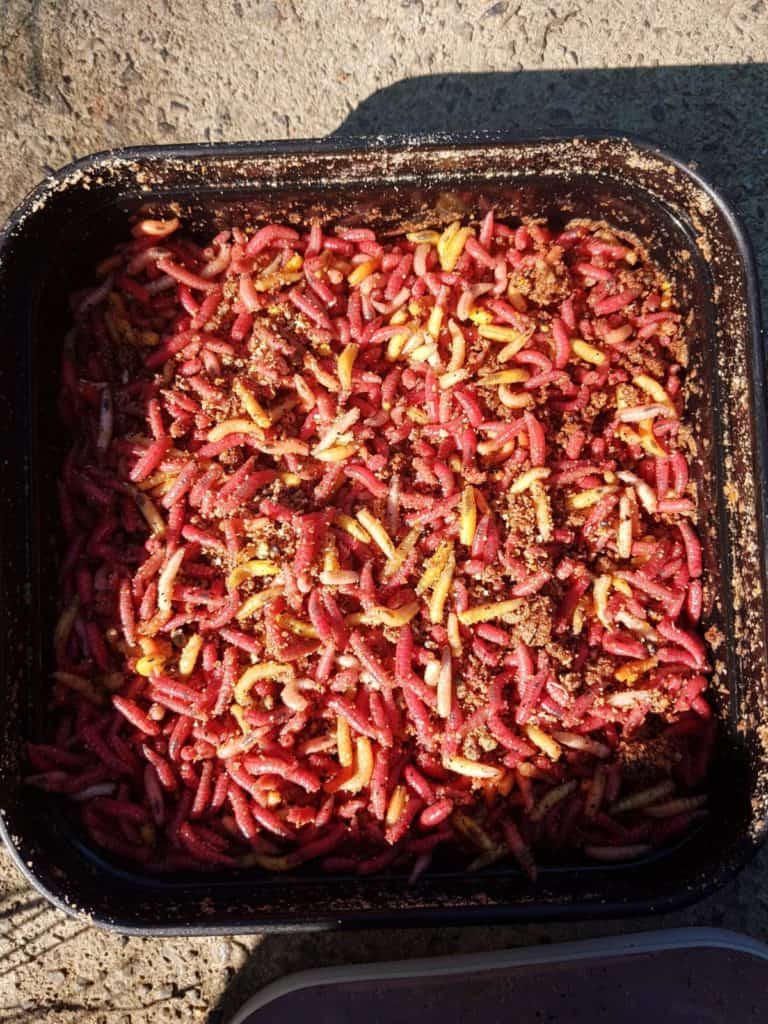
Bring Extra Spares With You – Just in Case
A box that I keep in the back of my car is also very important to ensure that I have all of the necessary spares for winter carp fishing.
It has various items that I keep in it, such as a spare gas stove, four liters of bottled water, a small tin of tiger nuts, a couple of pots of my favorite pop-up rigs, and a couple of spare batteries.
Some of the other items that I keep in the box include a change of clothes, a couple of instant food items, and my old gas stove.
Although I rarely use this box, it is very important to have it in case something goes wrong during my session. It can help me keep all of the necessary items that I need in case something should happen to me.
Scale Down Your Rigs and Hookbait
In the winter, I also make sure that my venue is well-tuned. For instance, I replace my size 6 and 4 hooks with size 8 and 10 hooks, and I change my 25lb hooklink material to a fluorocarbon.
This method helps me keep everything as least visible as possible during the winter carp fishing season.
If I am not casting far, I usually use a small lead size of 2oz. This method allows me to get in there and look for a gentle splash instead of a big splash.
Bite time is the right time!
During the colder months, the fish will only eat for a small amount of time each day. If you can work out during that window of opportunity, you can take advantage of the fish’s hunger.
Last year, I decided to fish a local day ticket lake and discovered that the bite time there varied from 7 am to 10 am. I arrived at the lake at 6 am and immediately started preparing my rods for the feeding spell.
By knowing the feeding spells, you can save a lot of money, time, and frustration.
React to Even the Smallest of Noise from Your Bite Alarm
A couple of years ago, I learned something that has greatly benefited me when it comes to catching more carp.
One of the most common reasons why many people fail to catch a fish is because they ignore the single beep on the alarm.
During the winter, I try to look for the areas where the hanger or the bobbin drops back slightly. This method has resulted in several fish being caught.
Check the Weather Before Choosing a Location
One of the most important factors that you should consider when it comes to choosing the right place to fish is having the right equipment.
Having the right equipment can help you piece everything together quickly.
When it comes to choosing the areas that are most exposed to the winds, some of the best bets are at the back of islands, sheltered bays, and banks that are more wooded.
These areas offer protection from the wind and are ideal for holding fish.
The winds that are ideal for fishing during the winter season are often southerlies or south-westerlies.
These conditions can provide you with an opportunity to catch fish, especially if the air temperatures are in the double digits.
However, if you are planning on fishing in areas that are prone to cold weather, avoid the northerlies and easterlies.
React to the Weather Conditions and Be Prepared to Follow the Wind
Although I usually recommend choosing areas that are protected from the wind, sometimes, being right in the middle of the wind can provide you with an opportunity to catch fish.
A strong southerly or a mild southerly wind can cause choppy water on the end of the lake to warm up much faster than the calm water on the back.
If the water is cold enough, then I can think of several occasions where I was able to catch fish while fishing on the end of the mild wind.
Unfortunately, these types of occurrences are usually short-lived and the fish will most likely go back to the protected water in the future.
If You See Signs of Fish, Move Immediately
During the winter carp fishing season, the presence of visible signs of fish, such as bubbles or breaks in the surface, is usually less.
However, if you are lucky enough to catch a fish that breaks the surface, then that can be a great start.
Unfortunately, the lack of signs can also prevent people from being able to catch fish. This is why it is important to consider the area where the fish are most likely to be holding.
Having a good idea about the area where the fish are most likely to be holding can help boost your confidence and make your fishing experience more successful.
During the summer season, there are many signs that can be found throughout the water. However, during the winter season, there are many more that can be seen.
Be In the Right Place When the Fish Start to Feed
One of the most important factors that you should consider when it comes to winter carp fishing is timing.
This is because during the winter season, the water temperature can drop dramatically and the presence of various signs can make a huge difference in how successful you are.
One of the most common reasons why people tend to choose a particular area for their fishing trips is because it looks and feels right.
However, if there are no signs to indicate that the area is being visited by the fish, then it can be a waste of time.
During the winter season, the feeding periods are usually shorter than those during the summer season.
Therefore, it’s important to monitor the activity and the time that the fish are being fed. This can help you keep track of when the action has occurred and when the activity has lifted.
If you notice a certain amount of activity at dusk, then make sure that the fishing rods are out and ready to go before you start your next trip.
It’s also important to remember that the take times can vary depending on the activity. For instance, while one swim may be ideal for evening fishing, another may only produce fish at dawn.
One of the most important factors that you should consider when it comes to fishing is the location of the fish and the timing of your trips.
Stick With the Rig and Bait That You Have Confidence In
If you’re planning on using a combination of different types of bait, then make sure that you use one that’s already comfortable to use.
This will allow you to make an informed decision when it comes to fishing.
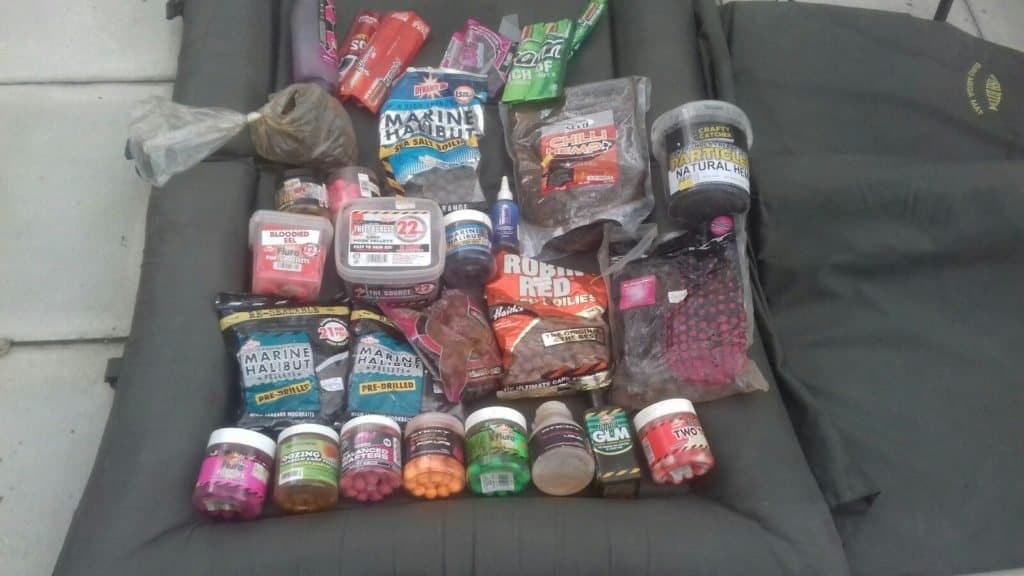
The best bait for the job can vary depending on the water conditions and the type of activity that you’re planning on participating in.
For instance, if you’re planning on using a combination of different types of bait, then make sure that you use one that you are confident in using.
One of the most important factors that you should consider when it comes to fishing is the type of bait that you should use.
Although boilies are still a good choice when it comes to winter carp fishing, they should be used in small quantities and preferably broken and crumbed.
Even if you’re planning on using a small amount of bait, you’re still likely to get a better response if you add small particles such as corn, hemp, and other small grains to your mix.
Further Reading
I have made a lot of mistakes during my fishing sessions and don’t want you to make the same mistakes. I’ve learned the hard way over 20 years of fishing most weekends, testing, tweaking, and testing again and now want to help you excel with your carp fishing.
If you need any help, you can reach me at Fishing Again’s Facebook page
Last Updated on February 13, 2024 by Shane

